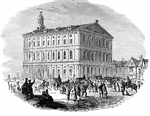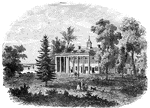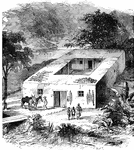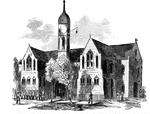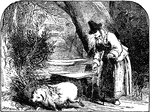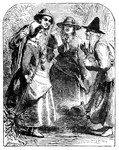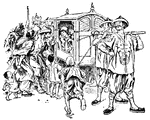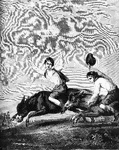
Joseph Brant (Thayendanegea)
(1742-1807) A Mohawk who held a colonel's commission from the King. After the revolution he returned…
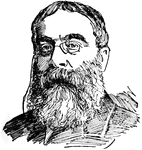
Walter Besant
(1836-1901) British novelist and social reformer who wrote The Children of Gideon, Conditions of Men…
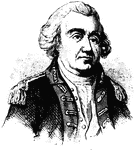
John Lamb
(1768-1835) He was an astrologer who was killed because people believed he had dealings with demons

Visual Illusion: Perspective
Who is the biggest? The policeman, most people would say. But the policeman is really the smallest,…
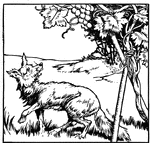
The Fox and the Grapes
Hungry fox eyes grapes just out of reach. "People very often pretend to dislike things that they are…
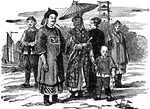
China, (People)
Group of Chinese people, Mandarin, Lady, Boy, Female Attendant, Soldier and Bird's-nest Seller.
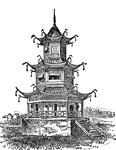
Chinese Temple
Within the Chinese Empire, the Chinese people were very religious. They had Chinese Temples in many…

The Statue of Liberty
"The Statue of Liberty was given by the Frenchmen to the people of the United States. The statue cost…

Company H
"Successful charge of Company H, first Massachusetts regiment (Captain Carruth), on a Confederate redan…

General Rosecrans
"General Rosecrans, commanding the Department of Western Virginia, surrounded by his staff, at their…
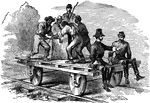
General Burnside
"Traveling in state"- General Burnside on the road from New Berne to Beaufort, N. C.

Captain Knapp
"Captain Knapp's Battery engaging the Confederates at the battle of Cedar Mountain, August 9th, 1862-…

Major Taylor
"Escorting Major Taylor, of New Orleans, the bearer of a flag of truce, blindfolded, to the Confederate…
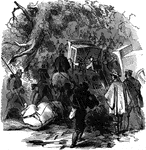
March of General Banks
"Incident in the march of General Banks's Division during a storm in Western Maryland." — Frank Leslie,…

Theodore Runyon
"New Jersey Camp at Arling, Va., designated as Camp Princeton in honor of one of the Revolutionary battle…
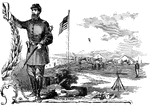
Aid-de-camp
"New Jersey Camp at Arling, Va., designated as Camp Princeton in honor of one of the Revolutionary battle…

View of Grafton
"View of Grafton, West Virginia, occupied by the Federal Troops, under the command of General McClellan,…
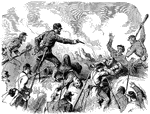
Lieutenant Colonel Morrison
"Heroic conduct of Lieutenant Colonel Morrison, Seventy-Ninth New York Highlanders, on the parapet of…

Kentucky Raid Rally
"The Confederate raid into Kentucky--excitement at Convington--gathering of armed Federal citizens at…

Review of Federal Army
"President Lincoln, attended by General McClellan and staff, reviewing the Federal army, on Tuesday,…

Fort Macon
"Surrender of Fort Macon, GA., April 26th, 1862- lowering the Confederate flag."— Frank Leslie,…

Castle Garden
"Reception of Brigadier General Corcoran by Mayor Opdyke and the citizens of New York, at Castle Garden,…

Northern Armies
"The enthusiasm of the Northern armies- re-enlistment of the Seventeenth Army Corps. Financial tests…

Fort Stevens
"The operations near Washington, scene of the fight in front of Fort Stevens, July 12th-13th, 1864.…

Bummers
"Sherman's 'Bummers' foraging in South Carolina. Our artist sent us with this sketch of 'Bummers Foraging'…

Siege of Vicksburg
"The siege of Vicksburg. General Grant meeting the Confederate General Pemberton at the Stone House,…
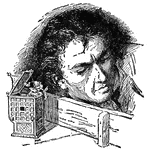
Whispering in Giant's Ear
Gulliver helping the lilliputians in thier war against the people of Blefuscu.
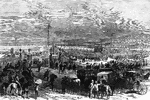
Antietam National Cemetary
"The dedication of the Antietam National Cemetary, at Sharpsburg, Md., on Tuesday, September 17th, 1867.…
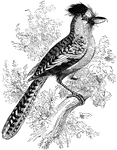
Batara
Taking its name from the Azara people of South America, the batara is the largest of the shrikes.

Isaac Rice
Isaac Rice was the name of our octegenarian guide. Like scores of those who fought our battles for freedom,…
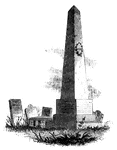
Caldwell's Monument
Caldwell's monument. The following are the inscriptions upon the Caldwell monument: East Side: "This…

Savin's Rock
Savin's Rock. This is a view of the spot where Farth landed, in Orange, formerly West Haven. It is between…
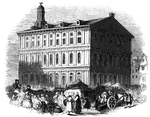
Faneuil Hall
"Faneuil Hall has been denominated 'the cradle of American liberty,' having been the popular gathering-place…
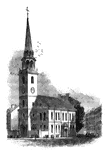
Old South
"The Old South. This venerable and venerated edifice, that stood through all the storms of the Revolution,…
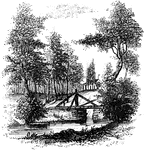
Sleepy Hollow
"Bridge over Sleepy Hollow Creek. Ichabod, according to Irving, in the Legend, returning from…

Grafton Occupied by Federal Troops
"View of Grafton, West Virginia, occupied by the Federal Troops, under the command of General McClellan,…

Railroad at Grafton
"View of Grafton, West Virginia, occupied by the Federal Troops, under the command of General McClellan,…
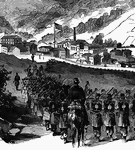
Federal Troops at Grafton, West Virginia
"View of Grafton, West Virginia, occupied by the Federal Troops, under the command of General McClellan,…
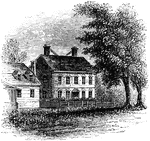
Nelson Mansion
"The Nelson Mansion. This view is from the street looking northwest. A long wooden building, with steep…


